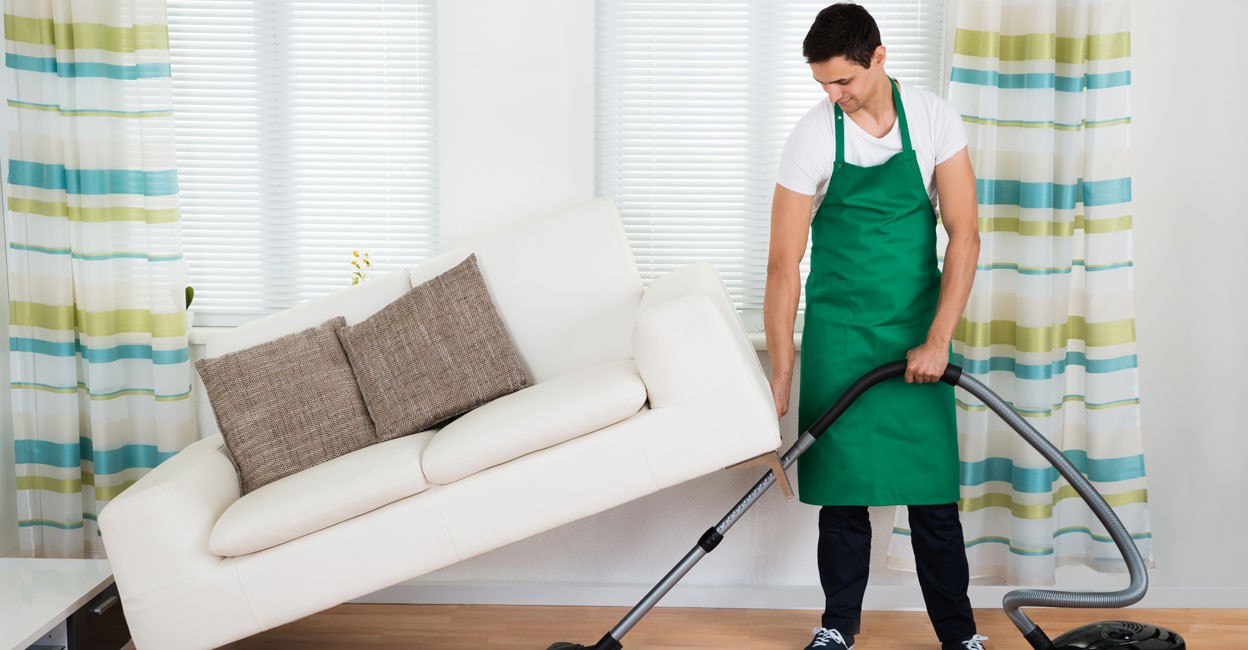Even the cleanest homes might benefit from a thorough cleaning. The best way to avoid being overwhelmed during a house cleaning is to break it into smaller chores. Our deep cleaning checklist begins with the six most important tasks. After that, you can focus on a few room-specific tasks. This comprehensive home maintenance checklist can be helpful before entertaining guests or when daily messes accumulate. You can also use these methods for spring or fall cleaning.
What is deep cleaning in housekeeping?
A deep cleaning process involves a thorough cleaning that eliminates visible dirt, germs, and bacteria. The process focuses on commonly used surfaces and accessible areas, but it should also include cleaning less frequently often areas such as a bookcase.
Home deep cleaning is generally a two-step process. The first step is those who are cleaning should physically clean surfaces. Then they will use disinfection chemicals to kill microorganisms. Cleaning the house is essential before disinfection because organic matter and dirt can hinder the effectiveness of disinfectants.
These types of home deep cleaning services are performed to eliminate a place of viruses and germs that are the cause of the flu or cold.
Difference between regular cleaning and deep cleaning
Attention to detail is the main distinction between regular and deep cleaning. While frequent cleaning is vital for hygiene, deep cleaning is more extensive than routine cleaning.
Deep cleaning requires a thorough scrubbing of all surfaces, including those that are difficult to reach. Every surface in your home that a stool can reach will be hand-wiped. Apart from the in-depth approach, it encourages general cleanliness and livability.
The cost difference between intensive and regular cleaning is also evident. Deep cleans are always more expensive and take longer.
What supplies are needed to deep clean your home?
Home deep cleaning requires various tools and cleaners. The most important materials needed for home cleaning are:
- In a shaker, take some baking soda
- Paintbrushes (for dusting delicate items)
- Soap (liquid or powdered)
- White vinegar
- Gloves
- Lint brush (for upholstery and lampshades)
- Microfiber wipes (both glass-only and multi-purpose)
- Covered microfiber mop for various surfaces
- Sponge erasers
- All-purpose cleaner
- Scrub pad made from nylon
- Alcohol for rubbing
- Brush with stiff bristles (for shower drains, door tracks, etc.)
- Smear-free window cleaner
- Comb, ceiling fan, microfiber, and squeegee attachments
- Wood conditioner/cleaner
A room-by-room checklist for deep cleaning your home
To deep clean your house, follow these steps.
Bathroom
Regular cleaning includes dusting and cleaning all surfaces. Mirror, vanity, shower, and toilets are taken up under deep cleaning services.
Deep cleaning services are a more extensive service. They include:
- Grout scrubber
- Cleaning wastebaskets
- Cleansing fixtures of limescale and soap scum
- Cleaning the baseboards as well as the door frames completely
- Cleaning inside medicine cabinets and vanities
- Disinfecting handles
- Cleaning the base of the commode
- Curtain, shower door, and crevice cleaning
Living room
On a routine cleaning, your cleaner cleans the general areas. Cleaning, organizing, and wiping surfaces are all part of deep cleaning services.
It may include:
- Cleaning behind furniture
- Clean ceiling fans and lamps
- Rug and upholstery cleaning
- Drapery care
- Cleaning garbage cans and other areas
- Cleaning lamp shades
- Cleaning windows, baseboards, and door frames
- Cleaning vent covers
- Cleaning windowsills and tracks
- Cleaning the walls
- Vacuuming the edges of walls and other gaps
- Polishing furniture
You can easily maintain your common areas by doing a weekly clean-up after cleaning the available areas. Unlike the bathroom and kitchen, those areas don’t get as filthy as soon.
Kitchen
The kitchen is also an unorganized space. Food splatters and grease can smear cabinets and appliances.
Your weekly cleaning routine involves washing all exposed surfaces and cleaning the floor.
Deep cleaning may include the following:
- Maintaining appliances
- Cleaning inside appliances (oven, fridge, microwave)
- Cleaning the stove hood and filter
- Cleaning the cabinets
- Cleaning grout on backsplashes or countertops
- Clean fridge coils
- Small kitchen appliance cleaning and disinfection
- Cleaning knobs and switches
Deep cleaning services remove all grease and food residues. It’s hard to remove these things once they’ve accumulated, so hiring a professional cleaning service makes it easier.
Bedrooms
- Clean the sheets, bed skirts, or duvet sheets. If the items are too big for your machine, take them to a laundromat or dry cleaner.
- Reverse your mattress. Another alternative is to rotate your pillow’s top to prevent grooves from forming from sleeping in one location for an extended time. Vacuum your mattress to refresh it.
- Vacuum or wash underneath beds and drawers. Focus on the corners and baseboards.
Laundry room
- Clean washing machines and surfaces. Get rid of the fine dusting of lint from all surfaces in the laundry room using a moist cloth.
- Remove stray dryer sheets and detergent bottles. Check behind the doors and cabinets for dryer sheets or lint clusters.
- Sort supplies. If your cleaning products are messy, make sure you place them in a way that you can easily locate and reach them easily.
- Clean your washer. After each load of laundry, open the washing machine door to let it air dry and stop mold growth. Clean the rubber seals around the door and inside the dispensers.
- Clean your dryer’s lint trap and vent. Remove lint from its trap after every load of laundry, then vacuum the trap and the area where it’s kept within the dryer.
- Clean the floor after cleaning the rest of the room, mop or vacuum the floor. Be sure to reach the corners and behind the equipment. Floor deep cleaning involves a thorough and intensive cleaning process to remove dirt, stains, and bacteria from every corner and crevice of the floor.
When should you schedule a deep cleaning?
Deep cleaning isn’t always needed. It’s typically a one-time service for a specific purpose. Situations where professional cleaning services are ideal:
- You could plan a deep cleaning when you relocate. This will give you a clean slate in your new home, free of past occupants’ dirt and grime.
- It can also be done at your former house when you leave. The new owners will have a fresh start.
- When hiring a service, some people begin with a deep clean. Start with a clean home. Professional cleaning services will continue to maintain the level of cleanliness that was created during the deep cleaning.
- You can arrange a deep cleaning before a large celebration or event. No one will notice dirt or grease on your appliances and baseboards.
Benefits of employing professional cleaning services
If you want to do a serious cleaning, professional cleaning services can help.
- Professional cleaning services are trained, and they know how to deep clean. They know where to clean and where dirt and grime are hidden. They have the right cleaning tools and products.
- In addition, they know how to clean securely. When it comes to tiles or baseboards, they know what works best.
- They can move large appliances and clean behind them since they’re trained to do so.
- Hiring a service can save time. It’s a deeper cleaning process, so it requires more time. The service can complete the task quickly, allowing you more time.
- You don’t have to spend hours washing grout lines or wiping down each slat on blinds.
Conclusion
These are general guidelines for deep cleaning. When hiring professional services to clean your house thoroughly, you should make a checklist and cross-check things with the provider. Mark them as covered and include them in their regular deep cleaning services. This ensures you get the cleaning quality and service you want for the agreed price.











